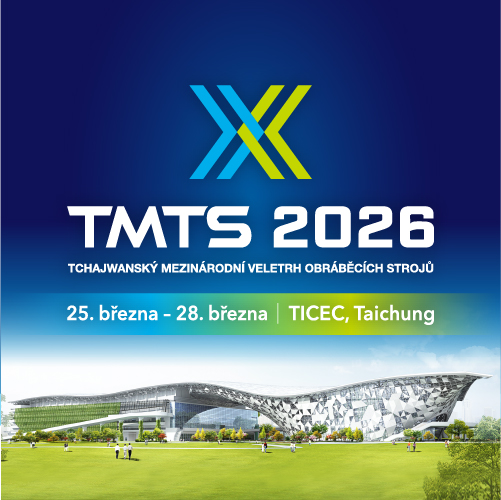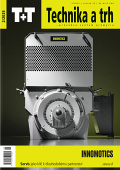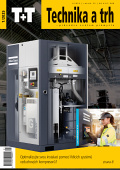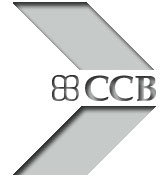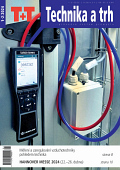Výhody úkosového plazmového pálení na CNC stroji Vanad BLUESTER
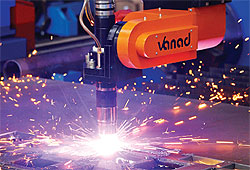
Proč úkos?
S úkosy, tedy šikmými řezy požadovaných rozměrů, se pracuje nejčastěji v průmyslových odvětvích, kde se vyrábějí zařízení do provozů s maximálním zatížením, např. stavební či zemědělské stroje, zařízení pro těžbu, lodní dopravu, lesnictví. Pro výrobce takovýchto zařízení je úkosování součástí přípravy komponentů pro následné svařování. Díky úkosům lze docílit pevnějších, odolnějších svárů.
Úkosy na výpalcích mohou plnit i jiné účely – konstrukční, odlehčovací, designové atd. Úplný výčet možností použití by byl samozřejmě podstatně rozsáhlejší, neboť je závislý na výrobních potřebách a požadavcích každého konkrétního uživatele. Velikost a tvar zhotovovaných úkosů je dán zejména tloušťkou zpracovávaného materiálu – plechu.
Úkosovačky? Ano i ne
Existuje celá řada možností, jak díly opatřit úkosem. Každý výrobce preferuje něco jiného. Ruční úkosovačky jsou nejflexibilnější, pracují s dostačující přesností, mají ale omezený záběr a pro dosažení většího úkosu je nutné proces opakovat. Síla materiálu je omezujícím faktorem i pro strojní úkosovačky, z důvodu pnutí na nich nelze opracovávat malé kusy nebo díly se složitějšími konturami. Další možností je úkosování pomocí autogenní technologie, a to jak ručním hořákem, úkosovacími strojky nebo roboticky. To je samozřejmě nejpřesnější, pro malovýrobu ale neekonomické. Nevýhodou autogenní metody je omezená škála materiálů, které lze opracovávat. Jako ideální se tedy jeví úkosování pomocí 3D plazmové hlavy na pálicím stroji jako doplněk pálení.
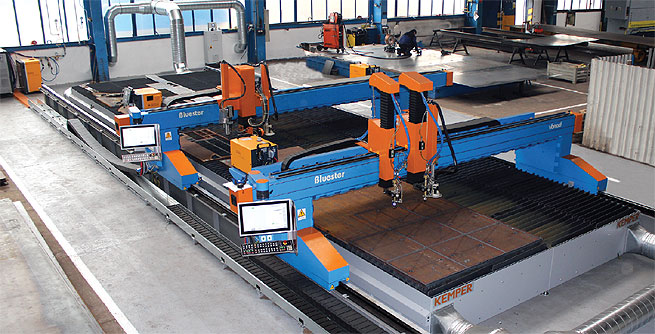
Úkosování na CNC pálicích strojích
Bez ohledu na to, jak jednoduché nebo složité je řezání úkosů na CNC pálicích strojích, platí, že aby bylo možno dosáhnout kýženého výsledku, jsou pro tvorbu úkosů stejně důležité tři hlavní faktory: vhodný hardware, sofistikovaný software a erudovaná obsluha.
Cesta ke kvalitním výpalkům s úkosem někdy trvá hodiny, bývá trnitá, plná pokusů a omylů. Základem úspěchu je kvalitní příprava dat a vhodný CNC pálicí stroj.
2D versus 3D
Čím je 3D řezání tak odlišné od tradičního 2D? Při 3D řezání vstupují do hry čtyři důležité proměnné: posuv, úhel naklonění, řezná spára a napětí oblouku. Zkombinovat všechny tyto faktory bývá někdy složitým oříškem i pro programátorské veterány. Maximální délka zhotovovaného úkosu je přitom limitována výkonem plazmového zdroje a technickými možnostmi daného CNC pálicího stroje.
Na kvalitní úkos mají vliv i další faktory: použitý plazmový a ochranný plyn, kvalita materiálu, originální a pravidelně měněné spotřební díly, údržba CNC pálicího stroje, jeho pravidelná kontrola a kalibrace. Až překvapivě významný vliv má na výsledek úkosování také výrobní prostředí. Například, zda se provádí na konvenčním stole nebo pod vodou.
CNC Vanad BLUESTER
Společnost Vanad 2000 a.s., český výrobce autogenních, plazmových a laserových řezacích strojů, vyvinula pro plazmové řezání pod úkosem vlastní 3D plazmovou hlavu, kterou je osazen stroj Vanad BLUESTER, určený i do nejtěžších provozů. 3D plazmová hlava umožňuje pálit úkosy pod úhlem až 50°, pro možnost korekcí umožňuje mechanika stroje sklon hlavy až do 55°.
Jedním z výrobních podniků, kde se tento typ plazmového řezání na stroji Vanad využívá, je česká společnost BAEST Maschines & Structures, a.s. v Benešově.
Ing. František Kulovaný, MBA, ředitel této firmy, shrnuje důvody, které v roce 2015 vedly k pořízení CNC pálicího stroje Vanad BLUESTER s technologií 3D plazmového řezání: „Jsme ryze česká středně velká výrobní firma. Pyšní jsme zejména na to, že se orientujeme převážně na export do zahraničí, vyvážíme do deseti zemí světa. Naše výrobky jsou často také reexportovány. Dobře hodnoceny jsou především pro vysokou kvalitu a spolehlivost. Zákazníci oceňují širokou škálu vyráběných produktů a zejména komplexní dodávku od jednoho dodavatele. Soustředíme se na veškerý sortiment nádob, jako jsou sila, nádoby pro skladování tekutin, výrobky pro chemický a petrochemický průmysl, nádoby pro teplárenství a energetiku, svařence pro různé druhy strojů, např. vodní elektrárny.
V roce 2015 jsme se rozhodli optimalizovat náš výrobní proces a logistiku. Chtěli jsme zvýšit produktivitu a rozhodli se pořídit dvouportálový řezací stroj Vanad s 3D hlavou a plazmovým zdrojem Kjellberg HiFocus 280i, dvěma značicími plazmovými jednotkami Kjellberg a navrtávací jednotkou. Druhý portál je osazen dvěma autogeny. Dříve jsme používali dva pálicí stroje od Vanadu, plazmový pro 2D pálení a autogenní stroj. S Vanadem máme tedy dlouhodobě dobré zkušenosti.
Při výrobě našich nádob a ocelových konstrukcí je hodně svářečské práce. Některé komponenty úkosujeme na mobilní úkosovačce, např. velké pravidelné kusy, kde není třeba materiál dělit, jen opatřit úkosem. V takových případech stačí mobilní úkosovačka, plazmové úkosování by bylo neekonomické z hlediska provozu a logistiky.
Pálicí stroj se snažíme maximálně vytížit, v jedno i dvousměnném provozu používáme dle potřeby obě technologie simultánně, na jednom portále se pálí autogenem, na druhém je v provozu 3D plazmová hlava, jindy jednotlivě."
3D plazmová hlava Vanad
3D plazmová hlava Vanad je plně robotická, otáčí se v ose hořáku, díky tomu se méně namáhají přívody plazmového zdroje i vlastní plazmový hořák. Díky robotickému softwaru od firmy B&R umožňuje 3D plazmová hlava Vanad plně automatické nastavení úhlů, korekci řezné spáry, přepočet délky plazmového oblouku a hlídání výšky. Pálicí plán je možné automaticky generovat z CAD/CAM systému. Konstrukce hlavy využívá pro rotační osy dvě harmonické převodovky, které vynikají vysokou přesností, tuhostí, zatížitelností i kompaktními rozměry. Špičkové servopohony od B&R zajišťují přesnost a potřebnou dynamiku pohybu hlavy.
Plazmový zdroj Kjellberg HiFocus 280i neo
Důležitým faktorem je výkon a kvalita zvoleného plazmového zdroje. Ten je i pro úkosové řezání volen dle kapacity propalu. Maximální délka úkosu je 1,5 násobkem tloušťky materiálu. Vzhledem k tomu, že úkosové řezání je pomalejší a náročnější na chlazení, doporučuje se volit o třídu výkonnější plazmový zdroj.
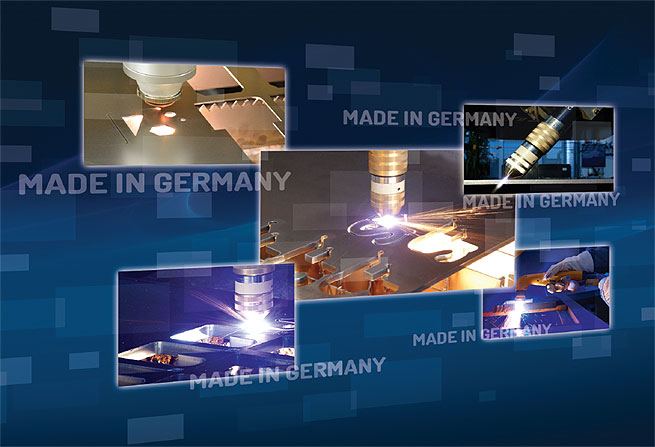
„Nekupuji jednotlivé stroje, nýbrž technologii," říká František Kulovaný, ředitel benešovského BAESTu a dodává: „Důležitá je především kvalita řezu a flexibilita výrobního procesu."
S plazmovým zdrojem High End HiFocus 280i od firmy Kjellberg Finsterwalde (Německo) získal benešovský BAEST při pořízení nového CNC řezacího pracoviště Vanad s touto plazmou i balíček technologií Contour Cut, Contour Cut Speed a HiFinox – tedy technologie plazmového řezaní vyvinuté speciálně pro konstrukční ocel a nerez.
Plazmové zdroje Kjellberg umožňují víceplynové řezání vodivých kovových materiálů a dalších materiálů o tloušťkách od 0,5 do 160 mm. Při vertikálním řezání nevzniká téměř žádná úhlová odchylka. Při řezání pod úkosem až do 50° se dociluje vysoké kvality výpalků a precizní přípravy ploch pro svařování pro automatizované výrobní procesy. Výpalky jsou vhodné pro jakékoliv následné opracování.
„Vynikající kvalita úkosů při použití plazmy HiFocus 280i neo na stroji Vanad BLUESTER byla jedním z důvodů pro zakoupení technologie Kjellberg do naší výroby," doplňuje Kulovaný. „Námi vyráběné nádoby z ocelových plechů jsou často vystaveny vysokému zatížení, kvalitní příprava dílů před svařováním je pro nás tedy zásadní. V kombinaci se značicí plazmou Kjellberg Finemarker se využití pálicího stroje ještě zefektivňuje. Pomocí plazmy Finemarker se vyznačí místa pro následné výrobní operace."
Plazmová řezná technologie Kjellberg, zejména řada HiFocus neo, je populární pro vynikající řezný výkon a vysokou kvalitu řezání. Plazmové hořáky s technologií vířivého plynu pro řezný proud od 5 A do 600 A umožňují 100% zatížení v nepřetržitém provozu a ve spojení s řezacími knihovnami a automatickými plynovými konzolami zajišťují vysokou účinnost při každodenním provozu. Díky tomu je řezání trubek, profilů, nádob a klenutých den, jakož i dalších 3D konstrukcí, vysoce kvalitní a flexibilní. Plazmové řezací systémy Kjellberg mohou být použity na všech dostupných pálicích strojích a v robotice, a to jak pro 2D a 3D, tak i pro plazmové řezání pod vodou (UWP).
Vanad 2000 a.s.
Společnost sídlí v Golčově Jeníkově a je tradičním českým výrobcem vysoce výkonných CNC strojů pro přesné tvarové řezání autogenem, nejmodernějšími plazmovými technologiemi i vláknovým laserem.
Díky nepřetržitému výzkumu a vývoji přináší Vanad na tuzemský i zahraniční trh komplexní inovativní řešení řezacích pracovišť. V prostorách firmy v Golčově Jeníkově se nachází jedno z největších stálých předváděcích center termického dělení v ČR. Zájemci si zde mohou prohlédnout CNC pálicí stroje Vanad, seznámit se s jejich technologickými možnostmi a ve spolupráci s techniky firmy vybrat nejvhodnější stroj i technologii pro daný výrobní program.
BAEST Machines & Structures, a.s.
Je ryze českou firmou pokračující v tradici strojírenské výroby v Benešově již přes 25 let. Je dceřinou společností BAEST Machinery Holding, a.s. a se zaměřením na těžší strojírenskou produkci. Firma se může pochlubit širokým výrobním programem, do něhož patří velkoobjemové nádrže, tlakové nádoby, aparáty, sila, zásobníky, technologické celky pro živičné hospodářství obaloven, ocelové konstrukce pro betonárky, nádrže na pohonné hmoty a komponenty pro energetický a environmentální průmysl. Výrobky z BAESTu míří nejen do zemí EU, ale také do dalších zemí, jako je například Ukrajina, USA, Korea a další. Firma se mimo jiné podílela na dodávkách dílů pro stroje a zařízení použitých při výstavbě největšího vodního díla v Číně „Tři soutěsky", výrobě montážních plošin pro nejmodernější výrobní závod Airbus v Toulouse či technologických nádrží pro nově vznikající automobilku Jaguar na Slovensku.
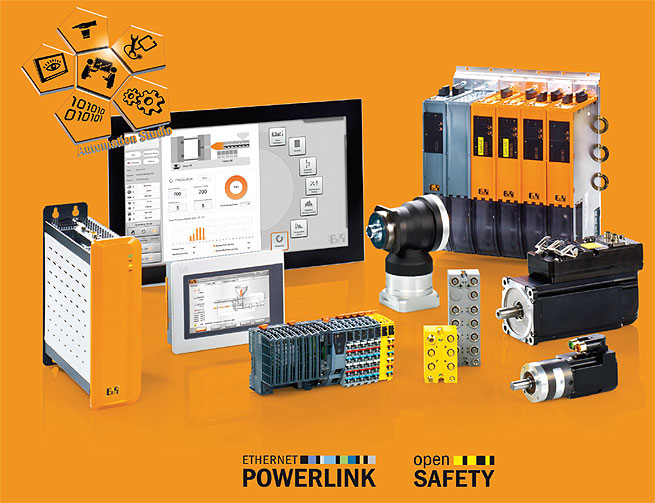
Kjellberg Finsterwalde
Jako průkopník v oblasti tepelného dělení a spojování nabízí Kjellberg Finsterwalde technologie a výrobky pro průmysl a řemeslnou výrobu. Ať už jde o ocelové konstrukce, potrubí a výrobu nádrží, automobilový průmysl, slévárenství nebo chemický průmysl, společnost Kjellberg Finsterwalde vytváří systémová řešení, proudové zdroje, spotřební díly a mnohé další pro všechna odvětví kovozpracujícího průmyslu a strojírenství.
Jako nejstarší výrobce technologií plazmového řezání na trhu nabízí Kjellberg Finsterwalde svým zákazníkům technologie plazmového a laserového řezání pro širokou škálu využití při automatizovaném, mechanizovaném nebo ručním řezání – se zárukou kvality made in Germany.
B&R
Je dodavatel inovativní automatizace se sídlem v Rakousku a sítí poboček po celém světě. Jako celosvětový lídr v oblasti průmyslové automatizace nabízí B&R nej-modernější technologii s cílem poskytnout zákazníkům prakticky v každém odvětví kompletní řešení pro automatizaci strojů a výroby, řízení pohybu, HMI a integrovanou funkční bezpečnost. B&R neustále definuje trendy v oblasti průmyslové automatizace díky použití komunikačních standardů, jako je POWERLINK a openSAFETY, stejně jako mocného vývojového prostředí Automation Studio. Inovativní duch, který udržuje B&R v čele průmyslové automatizace, je řízen závazkem ke zjednodušení procesů a překonávání očekávání zákazníků.
www.vanad.cz
www.br-automation.com
www.kjellberg.cz
www.baest.cz
The Art of Bevel
CNC 3D Plasma Cutting as an optimization of the manufacturing process
Benefits of bevel plasma cutting on the CNC Vanad BLUESTER
Why a bevel?
Bevel - ie, bevelled cuts of the required dimensions are most often used in industrial sectors where machines for maximum loading operation are produced, such as construction or agricultural machinery, mining, shipping, forestry equipment.
For manufacturers of such devices bevelled components are part of the preparation process for subsequent welding. Thanks to the bevelling, stronger and more durable welds can be achieved.
Beveled cut parts can also serve other purposes - construction, lightening, design, etc. A complete list of usage options would be considerably larger, of course, as it depends on the production needs and requirements of each particular user.
The dimensions and shape of the bevels produced are determined in particular by the thickness of the material being processed.
Bevelers? Yes and no.
There are many ways to bevel the pieces. Every manufacturer prefers something else. Manual bevels are the most flexible ones, they work with sufficient precision, but they have a limited notch, and the process needs to be repeated to achieve a larger bevel.
The thickness of the material is a limiting factor for the machine bevellers, due to the tension they are unable to process small pieces or parts with more complex contours. Another option is bevelling with the help of oxy-fuel technology, both by manual burners, bevelling machines or robotically. For small operations, this is obviously the most accurate but non-economic method. The disadvantage of the oxy-fuel method is the limited range of materials that can be machined. Using a 3D plasma head on a thermal cutting machine as an additional equipment seems to be the best option.
Beveling on CNC cutting machines
Regardless of how simple or complex cutting of bevels on CNC cutting machines is, to achieve the desired result, three major factors should be considered, equally important: proper hardware, sophisticated software, and erudite operators. Sometimes it takes hours to get quality beveled cut parts, it is tricky, lots of attempts and mistakes. The basis for success is a good data preparation and a suitable CNC cutting machine.
2D against 3D
What is the difference between 3D and traditional 2D cutting? With 3D cutting, four important variables come into play: the feed rate, the angle of the slope, the cutting kerf, and the arc voltage. Combining all these factors can sometimes be a tough nut for senior programmers. The maximum length of the bevel made is limited by the plasma source performance and by the technical possibilities of the given CNC cutting machine. Other factors that can influence the quality of the bevel: used plasma and shield gas, material quality, the original and regularly changed consumables, maintenance of the CNC cutting machine, its regular inspection and calibration. A production environment also has a surprisingly significant effect on the result of beveling.
For example, if beveling is done on a conventional or underwater table.
CNC Vanad BLUESTER
Vanad 2000 a.s., a Czech manufacturer of oxy-fuel, plasma and laser cutting machines, has developed its own 3D Plasma Cutting Head which can be mounted on the Vanad BLUESTER machine designed for heavy operations. The 3D plasma head allows to make bevels up to 50°, allowing the machine to adjust head slope even up to 55°. One of the manufacturing plants where this type of plasma cutting head is used is the Czech company BAEST Machines & Structures, a.s. in Benešov. František Kulovaný, MBA, Director General and Chairman of the Board of Directors, summarizes the reasons for purchasing the Vanad BLUESTER CNC cutting machine with 3D plasma cutting technology in 2015: "We are a purely Czech medium-sized manufacturing company. We are especially proud to focus mainly on sales abroad, we export to ten countries all around the world. Our products are also often re-exported. They are well rated mainly for high quality and reliability. Customers appreciate a wide range of manufactured products and, in particular, a comprehensive supply from one supplier. The customers appreciate a wide range of manufactured products and in particular, the comprehensive supply from one supplier. We focus on all sorts of containers such as silos, containers for liquid storage, products for the chemical and petrochemical industry, containers for heating plants and power engineering, weldings for various types of machines, eg hydroelectric power plants. In 2015, we decided to optimize our production process and logistics. We wanted to increase our productivity and decided to buy a Vanad two-gantry cutting machine with a 3D head and a Kjellberg HiFocus 280i neo plasma source, two Kjellberg marking units and a drilling unit. The second gantry is equipped with two oxy-fuel units. Previously, we used two cutting machines from Vanad, plasma machine for 2D and an oxy-fuel cutting machine. So we have a good long experience with Vanad. There is lots of welding works to make our containers and steel constructions. Some components are bevelled on a mobile beveler, such as large regular pieces where it is not necessary to cut the material, just to make a bevel. In such cases, a mobile beveler is sufficient, plasma beveling would be non-economic from the operational and logistical point of view. We try to make the most of the cutting machine, using both technologies simultaneously in two-shift production, with the oxy-fuel on the one gantry, and the 3D plasma head on the other, otherwise they are used separately."
3D Vanad Plasma head
The 3D Vanad plasma head is fully robotic, rotating in the axis of the torch, making it less demanding both for the plasma leads and the plasma torch itself. With the robotic B&R software, the 3D Vanad plasma head can fully adjust the angles, kerf correction, recalculation of plasma arc length and height control. The cutting plan can be automatically generated from the CAD / CAM system. Two harmonic planetary gears are used in the construction of the head in rotate axes which excel with high precision, rigidity, loadability and compact dimensions. B&R's top-of-the-line servo drives deliver the precision and dynamic movement of the head.
Plasma source Kjellberg HiFocus 280i neo
An important factor is the performance and quality of the selected plasma source. For bevel cutting, it is also selected according to the pierce capacity. The maximum bevel length is 1.5 times the thickness of the material. Due to the fact that bevel cutting is slower and more demanding for cooling, it is recommended to choose one class more efficient plasma source. "I do not buy individual machines but technology," says Frantisek Kulovaný, Director of BAEST Benešov, and adds: "The cutting quality and the flexibility of the production process are important first of all." With the High-End HiFocus 280i Plasma Source from Kjellberg Finsterwalde (Germany) along with the new Vanad CNC cutting machine BAEST from Benešov also gained a package of Contour Cut, Contour Cut Speed and Hi- Finox - Plasma Cutting Technologies specially developed for mild steel and stainless steel as well. Kjellberg plasma sources allow multi-gas cutting of conductive metal materials and other materials with thicknesses from 0.5 to 160 mm. There is almost no angular deviation while vertical cutting. Even while cutting bevels up to 50° high-quality cut parts and precise preparation of welding surfaces for automated manufacturing processes can be achieved. Cutting parts are suitable for any subsequent machining. "The excellent quality of bevels when using the HiFocus 280i neo plasma on the Vanad BLUESTER was one of the reasons for buying Kjellberg technology in our production," adds Kulovaný. "Our steel vessels often come under high loading, good preparation of parts before welding is essential for us, combined with the Kjellberg FineMarker unit, the cutting machine is even more efficient. With the help of the FineMarker plasma, areas for subsequent manufacturing operations are marked." Kjellberg Plasma Cutting Technology, especially the HiFocus neo line, is popular for superior cutting performance and high cutting quality. Plasma burners with swirl gas technology for cutting current from 5A to 600A allow for 100% loading while continuous operation and provide high efficiency in everyday operation. Thanks to this, cutting of pipes, beams, containers, and arched bottoms, as well as other 3D constructions, is high quality and flexible. Kjellberg plasma cutting systems can be used on all available cutting machines and in robotics, both for 2D and 3D, as well as for plasma under water cutting (UWP).
Vanad 2000 a.s.
The company has its headquarters in Golčův Jeníkov and is a traditional Czech manufacturer of high-performance CNC machines for precise oxy-fuel cutting, state-of-the-art plasma technologies, and fiber lasers. Thanks to continuous research and development, Vanad brings comprehensive innovative solutions for cutting workstation to domestic and foreign markets. The premises of the company in Golčův Jeníkov is one of the largest permanent demonstration center for thermal cutting in the Czech Republic. Those interested can explore Vanad CNC cutting machines, get to know their technological possibilities and, in cooperation with the company's technicians, choose the most suitable machine and technology for the given production program.
BAEST Machines & Structures, a.s.
A Czech company purely continuing in the tradition of engineering production in Benešov for over 25 years. It is a subsidiary of BAEST Machinery Holding, a.s. and is focused on the heavier engineering production. The company shows off a wide-ranging production program including large-volume tanks, pressure vessels, devices, silos, storage tanks, technological complexes for bituminous packaging plants, steel tanks and components for the energy and environmental industries. BAEST products are not only aimed at EU countries but also in other countries such as Ukraine, USA, Korea, and others. The company also participated in the supply of parts for machines and equipment used in the construction of the largest water construction in China, the "Three Gorges", the production of assembly platforms for the most modern Airbus manufacturing plant in Toulouse or technological tanks for the new emerging Jaguar automobile factory in Slovakia.
Kjellberg Finsterwalde
As a pioneer in the field of thermal cutting and joining, Kjellberg Finsterwalde offers technology and products for industry and craftsmanship. Whether it is steel constructions, piping and tank manufacturing, automotive, foundry or chemical industry, Kjellberg Finsterwalde creates system solutions, power supplies, consumables and many more for all metalworking industries and engineering. As the oldest manufacturer of plasma cutting technology in the market, Kjellberg Finsterwalde offers its customers plasma and laser cutting technologies for a wide range of applications in automated, mechanized or manual cutting - with a guarantee of quality - made in Germany.
B&R
A supplier of innovative automation based in Austria with network branches all over the world. As a global leader in industrial automation, B&R offers the state-of-the-art technology to provide customers with virtually every industry-complex solution for machine and manufacturing automation, motion control, HMI and integrated functional safety. B&R continuously defines trends in industrial automation through the use of communication standards such as POWERLINK and openSAFETY, as well as the powerful Automation Studio development environment. The innovative spirit that B&R maintains at the forefront of industrial automation is driven by a commitment to streamlining processes and overcoming customer expectations.
Translated from the Czech version posted in T+T Technika a trh 10/2018
Die Kunst des Fasenschnitts
CNC 3D-Plasmaschneiden als Optimierung des Fertigungsprozesses
Vorteile des Plasmaschneidens auf der CNC Vanad BLUESTER
Wozu ein Fasenschnitt?
Fasen sind abgeschrägte Schnittkanten mit spezifischen Winkeln und Abmessungen. Fasen ist auch unter dem Begriff der Schweißnahtvorbereitung einzuordnen. Fasen werden vorrangig in industriellen Bereichen mit maximaler Belastung, wie dem Maschinenbau benötigt und werden für die Fertigung von Bau- oder Landmaschinen, im Bergbau, in der Schifffahrt, für Forstmaschinen uvm. eingesetzt.
Für Hersteller solcher Anlagen, Geräte oder Konstruktionen sind abgeschrägte Bauteile Teil des Vorbereitungsprozesses für das anschließende Verbindungsschweißen. Dank der Abschrägung können stärkere und dauerhaftere Schweißnähte erzielt werden. Abgeschrägte Teile können auch anderen Zwecken wie Konstruktionen, als Design-Element usw. dienen. Die Einsatzmöglichkeiten für Fasen sind sehr umfangreich und hängen stets von Produktionsanforderungen und Erfordernissen jedes einzelnen Benutzers ab. Die Abmessungen und die Form der erzeugten Fasen werden insbesondere durch die Dicke des zu bearbeitenden metallischen Werkstoffs bestimmt.
Fasen? Ja und nein.
Es gibt viele Möglichkeiten, Teile zu fasen oder abzukanten. Jeder Hersteller entwickelt im Laufe des Arbeitsalltags eine Präferenz für eine Technologie. Manuelle Fasen sind die flexibelsten, sie arbeiten mit ausreichender Präzision, haben aber eine begrenzte Schnitttiefe und der Prozess muss wiederholt werden, um eine größere Fase zu erzielen. Eine Reproduzierbarkeit wird dabei selten erreicht. Die Materialstärke ist ein limitierender Faktor für das maschinelle Fasen, da sie aufgrund der Spannung kleine Teile oder Teile mit komplexeren Konturen nicht bearbeiten können. Eine weitere Option ist das Abschrägen mit Hilfe des Brennschneidens, sowohl bei manuellen Brennern als auch bei Anfasmaschinen oder Robotern. Für kleine Betriebe ist dies häufig die erste Wahl. Das Brennschneiden ist die genaueste, aber für Kleinserien oder einer kleinen Produktion nicht wirtschaftlichste Methode. Der Nachteil der Autogen-Methode ist die begrenzte Auswahl an Materialien, die bearbeitet werden können. Bei der Verwendung eines 3D-Plasmakopfes auf einer CNC-Brennschneidmaschine lassen sich die Vorteile der Verfahren vereinen. Das Plasmaschneiden scheint daher die optimale Lösung.
Anfasen auf CNC-Schneidemaschinen
Unabhängig davon, wie einfach oder komplex das Anfasen an CNC-Schneidemaschinen ist, um das gewünschte Ergebnis zu erzielen, sollten drei wichtige Faktoren berücksichtigt werden: richtige Hardware, ausgefeilte Software und gelernte Bediener. Es bedarf mehrerer Tests mit unterschiedlichen Parametern, um die optimale Fasenqualität zu erhalten. Die Basis für den Erfolg ist eine gute Datenaufbereitung und eine geeignete CNC-Schneidmaschine.
2D gegen 3D
Was ist der Unterschied zwischen 3D- und traditionellem 2D-Schneiden? Beim 3D-Schneiden kommen vier wichtige Größen ins Spiel: die Vorschubgeschwindigkeit, der Neigungswinkel, der Schnittfuge und die Lichtbogenspannung. Die Kombination dieser Faktoren ist für erfahrene Programmierer mitunter eine Herausforderung. Die maximale Länge der hergestellten Fase ist zum einen abhängig von der Leistung der Plasmastromquelle und zum anderen von den technischen Möglichkeiten der CNC-Führungsmaschine. Weitere Faktoren, die die Qualität der Fase beeinflussen können, sind die verwendeten Plasma- und Schutzgase, die Materialqualität, die Verschleißteile sowie die regelmäßige Wartung und Kalibrierung der CNC-Schneidmaschine. Selbst die Produktionsumgebung hat Auswirkungen auf das Ergebnis der Fasen.
CNC Vanad BLUESTER
Vanad 2000 a.s., ein tschechischer Hersteller von Autogen-, Plasma- und Laserschneidmaschinen, hat seinen eigenen 3D-Plasmaschneidkopf entwickelt, der an der Vanad BLUESTER-Maschine für schwere Einsätze montiert werden kann. Der 3D-Plasmabrenner ermöglicht die Herstellung von Fasen bis zur Neigungswinkel von 50°, so dass die Anlage Neigungswinkel sogar auf 55° einstellen kann. Eine der Fertigungsstätten, in denen diese Art von Plasmaschneidkopf eingesetzt wird, ist die tschechische Firma BAEST Machines & Structures, as. in Benesov. František Kulovaný, MBA, Generaldirektor und Präsident des Verwaltungsrates, fasst die Gründe für den Kauf der Vanad BLUESTER CNC-Schneidemaschine mit 3D-Plasmaschneidtechnologie im Jahr 2015 zusammen: "Wir sind ein rein tschechisches mittelständisches Produktionsunternehmen. Wir konzentrieren uns hauptsächlich auf den Verkauf im Ausland und exportieren in zehn Länder auf der ganzen Welt. Unsere Produkte werden auch oft wieder exportiert. Sie sind vor allem für hohe Qualität und Zuverlässigkeit bekannt. Darauf sind wir besonders stolz. Kunden schätzen eine breite Palette von hergestellten Produkten und insbesondere eine umfassende Versorgung aus einer Hand. Wir produzieren alle Arten von Behältern wie Silos, Behälter für flüssige Lagerung, Produkte für chemische und petrochemische Industrie-Behälter für Heizkraftwerke sowie Energietechnik und übernehmen auch Schweißarbeiten für verschiedene Maschinentypen z.B. für Wasserkraftanlagen.
2015 haben wir uns entschieden, unseren gesamten Produktionsprozesses und unsere Logistik zu optimieren. Wir wollten unsere Produktivität sowie Wirtschaftlichkeit steigern und entschieden uns, eine Vanad-Zwei-Portal-Schneidmaschine mit einem 3D-Kopf und einer Kjellberg HiFocus 280i Neo-Plasmastromquelle, zwei Kjellberg-Markiereinheiten und einer Bohreinheit zu kaufen. Portal ist mit zwei Autogen-Schneideinheiten ausgestattet. Zuvor verwendeten wir zwei Schneidemaschinen von Vanad, eine Plasma-Maschine für 2D und eine Autogen-Schneidmaschine. Wir haben also viel Erfahrung mit Vanad. Es gibt viele Schweißarbeiten zur Fertigung unserer Container und Stahlkonstruktionen. Einige Komponenten sind auf einem mobilen Fasenschneider abgeschrägt, z. B. große regelmäßige Stücke, bei denen es nicht notwendig ist, das Material zu schneiden, nur um eine Abschrägung herzustellen. In solchen Fällen ist das mobile Fasenschneiden ausreichend. Eine Plasma-Abschrägung wäre aus betriebswirtschaftlicher und logistischer Sicht hier nicht sinnvoll. Wir versuchen, die Schneidmaschine optimal zu nutzen, indem wir sowohl Autogen, als auch Plasmaschneiden im Zweischichtbetrieb gleichzeitig einsetzen."
3D Vanad-Plasmabrenner
Der 3D-Vanad-Plasmakopf ist vollständig automatisiert und rotiert an der Achse des Brenners, wodurch er sowohl für den Plasmastromanschluss als auch für den Plasmabrenner weniger anspruchsvoll ist. Mit der Roboter-B&R-Software kann der 3D-Vanad-Plasmakopf die Winkel, die Schnittfugenkorrektur, die Neuberechnung der Plasmalichtbogenlänge und die Höhensteuerung vollständig einstellen. Der Schneidplan kann automatisch aus dem CAD / CAM-System generiert werden. Zwei harmonic Planetengetriebe bei dem Kopf, die sich durch hohe Präzision, Steifigkeit, Belastbarkeit und kompakte Abmessungen auszeichnen, ermöglichen das reibungslose rotieren an den Achsen. B&R-Servoantriebe liefern die präzise und dynamische Bewegung des Kopfes.
Plasmastromquelle Kjellberg HiFocus 280i neo
Ein wichtiger Faktor ist die Leistung und Qualität der ausgewählten Plasmastromquelle. Für das Fasenschneiden wird es ebenfalls entsprechend der Lochstechkapazität ausgewählt. Die maximale Fasenlänge beträgt das 1,5-fache der Materialstärke. Aufgrund der Tatsache, dass das Fasenschneiden langsamer und anspruchsvoller ist, wird empfohlen, eine leistungsstarke Plasmastromquelle zu wählen. "Ich kaufe keine einzelnen Maschinen, sondern Technologie", sagt Frantisek Kulovaný, Direktor von BAEST Benešov, und fügt hinzu: "Die Schnittqualität und die Flexibilität des Produktionsprozesses sind in erster Linie wichtig." Mit der High End-Plasmaschneidstromquelle HiFocus 280i aus dem Hause Kjellberg Finsterwalde investierte er in ein Technologiepaket mit Contour Cut, Contour Cut Speed und HiFinox – Schneidtechnologien, die speziell für Werkstoffe wie Baustahl und CrNi-Werkstoffe entwickelt wurden. Damit werden alle metallisch leitfähigen Werkstoffe und andere Werkstoffe im Multigasregime bei Werkstoffdicken von 0,5 mm bis 160 mm mit einem weitestgehend nachbearbeitungsfreien Schneidergebnis geschnitten. Während des vertikalen Schneidens gibt es kaum Winkelabweichungen. Auch beim Schneiden von Fasen bis zu 50° können qualitativ hochwertige Zuschnitte und eine präzise Vorbereitung der Schweißflächen für automatisierte Fertigungsprozesse erreicht werden. Schneidteile sind für jede nachfolgende Bearbeitung geeignet. "Die ausgezeichnete Qualität der Fasen bei der Verwendung des HiFocus 280i neo auf der Vanad BLUESTER war einer der Gründe für den Kauf der Kjellberg-Technologie in unserer Produktion", ergänzt Kulovaný. "Die von uns produzierten Behälter aus Stahlblech geraten oft unter hohe Belastung, eine gute Vorbereitung der Teile vor dem Schweißen ist für uns unerlässlich. In Kombination mit dem Kjellberg FineMarker ist die Schneidemaschine noch effizienter. Mit Hilfe des FineMarkers werden Bereiche für nachfolgende Fertigungsschritte markiert." Kjellberg Plasmaschneidtechnik, insbesondere die HiFocus neo-Reihe, ist bekannt für herausragende Schneidleistungen bei einem qualitativ sehr hochwertigen Schneidergebnis. Plasmabrenner mit Wirbelgastechnologie für Schneidströme von 5 A bis 600 A im Dauerbetrieb in Verbindung mit Schneiddatenbanken und automatischen Gaskonsolen sichern eine hohe Effizienz im täglichen Schneidbetrieb. Folglich sind Rohre und Profile, Behälter und Klöpperböden sowie andere 3D-Strukturen mit einer großen technologischen Flexibilität plasmageschnitten. Kjellberg-Plasmaschneidanlagen sind an allen marktüblichen Führungssystemen und Roboterntechnik im 2D- und 3D-Bereich, auch zum Unterwasserplasmaschneiden (UWP), einsetzbar.
Vanad 2000 a.s.
Das Unternehmen mit Sitz in Golčův Jeníkov ist ein traditioneller tschechischer Hersteller von Hochleistungs-CNC-Maschinen für das präzise Schneiden mit Autogen, modernster Plasmatechnologie und Faserlaser. Dank kontinuierlicher Forschung und Entwicklung bietet Vanad umfassende innovative Lösungen für das Schneiden von Arbeitsstationen in den In- und Ausland. Auf dem Gelände des Unternehmens in Golčův Jeníkov befindet sich eines der größten ständigen Vorführzentren für thermisches Schneiden in der Tschechischen Republik. Interessierte können die Vanad-CNC-Schneidemaschinen erkunden, ihre technologischen Möglichkeiten kennenlernen und in Zusammenarbeit mit den Technikern des Unternehmens die für das jeweilige Produktionsprogramm am besten geeignete Maschine und Technologie auswählen.
BAEST Machines & Structures, a.s.
Ist eine tschechische Firma, die die Tradition der Maschinenbauproduktion seit mehr als 25 Jahren in Benešov fortsetzt. Es ist eine Tochtergesellschaft von BAEST Machinery Holding, a.s. und konzentriert sich auf die schwerere Maschinenbauproduktion. Das Unternehmen zeigt ein breit gefächertes Produktionsprogramm mit großvolumigen Tanks, Druckbehältern, Vorrichtungen, Silos, Lagertanks, technologischen Komplexen für Bitumenverpackungsanlagen, Stahltanks und Komponenten für die Energie- und Umweltindustrie. BAEST-Produkte richten sich nicht nur an EU-Länder, sondern auch an andere Länder wie die Ukraine, USA, Korea und andere. Das Unternehmen beteiligte sich auch an der Lieferung von Teilen für Maschinen und Ausrüstungen für die Errichtung großer Wasserbauten in China, der "Drei Schluchten", der Produktion von Montageplattformen für die modernste Airbus-Fabrik in Toulouse oder von technologischen Tanks für die neu entstehende Jaguar Automobilfabrik in der Slowakei.
Kjellberg Finsterwalde
Kjellberg Finsterwalde bietet als Pionier im thermischen Trennen, Fügen und Verändern Technologien und Produkte für Industrie und Handwerk. Ob Stahlbau, Rohleitungs- und Behälterbau, Fahrzeugbau, Gießerei oder Chemieindustrie, Kjellberg Finsterwalde fertigt Systemlösungen, Stromquellen, Verschleißteile und vieles mehr für alle Branchen der Metall- und Maschinenbaubranche.
Als ältester Hersteller von Plasmaschneidtechnik im Markt bietet Kjellberg Finsterwalde seinen Kunden Plasma- und Laserschneidtechnik für unterschiedlichste Aufgabenstellungen beim automatisierten, mechanisierten oder manuellen Schneiden – mit dem Qualitätsversprechen made in Germany.
B&R
Ein Anbieter innovativer Automatisierung mit Sitz in Österreich mit weltweiten Netzwerk-Niederlassungen. Als ein weltweit führender Anbieter in der industriellen Automatisierung bietet B&R die modernste Technologie, um Kunden nahezu für jede Branche eine komplexe Lösung für Maschinen- und Fertigungsautomatisierung, Bewegungssteuerung, HMI und integrierte funktionale Sicherheit anzubieten. B&R definiert kontinuierlich Trends in der industriellen Automatisierung durch den Einsatz von Kommunikationsstandards wie POWERLINK und openSAFETY sowie der leistungsfähigen Entwicklungsumgebung Automation Studio. Der Innovationsgeist, den B&R an der Spitze der Industrieautomation hält, basiert auf der Verpflichtung, Prozesse zu rationalisieren und die Erwartungen der Kunden zu übertreffen.
Übersetzt aus dem tschechischen Original in T+T Technika a trh 10/2018
RSS Sitemap Trends Zásady ochrany osobních údajů Tvorba webových stránek Brno - Webservis © 2023. Všechna práva vyhrazena.


